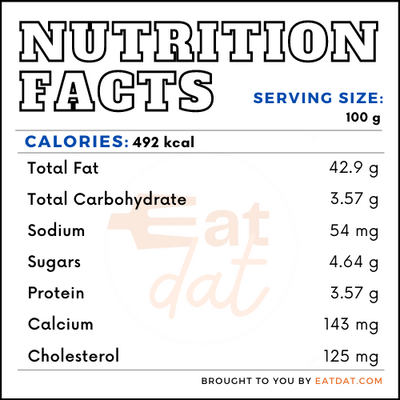
Mascarpone
What is Mascarpone?
Mascarpone is a soft cheese of Italian origin. It is similar in texture to cream cheese or soft butter. It is best known for being the main ingredient in tiramisù, an Italian dessert. This fresh cheese is made with cream that is coagulated with citric or tartaric acid, vinegar, or lemon juice.
- With a fat content between 60 to 75 percent, this cheese has a buttery and mildly sweet taste.
- Apart from being extensively used in desserts, the cheese can be used as a spread, or as a substitute for heavy cream or sour cream in soups and sauces.
The top 5 most popular brands are:
- Ciresa
- Igor
- Defendi
- Mozzarella Fresca
- BelGioioso
Origin of mascarpone
This cheese has its origins in medieval Italy. The name itself may be of Spanish origin and is believed to be derived from ‘mas que bueno’, meaning ‘better than good’. Another possible derivation of the word is ‘mascarpia’, which was how ricotta cheese was known locally. It may also be derived from the word ‘mascarpa’, a type of cheese. A product of the Lombardy region, the cheese was first invented in the late 1500s to the early 1600s. Today, this cheese is used all over Italy, as well as much of the world.
Nutrition
A 100 g serving of mascarpone contains:

Soft cheeses like this have high levels of vitamin K, which is essential for making proteins needed for blood clotting and bone tissue production. This cheese also contains decent levels of vitamin A and calcium. However, due to its high-fat content, excessive consumption of it may cause heart problems. An Australian study has also recommended a diet called FODMAP restricting this cheese for people suffering from gastrointestinal problems and irritable bowel syndrome.
Commercial production
Mascarpone cheese is produced with cream that has been acidified with lemon juice, vinegar, or citric or tartaric acid. First, the acidified cream is heated at 212° F, leading to precipitation of the curd. Then, the curds and the whey are separated through filtration. Finally, the separated curd is whipped until softened. All dairy products used in manufacturing are pasteurized.
This cheese must be stored in the fridge and can last for up to one week. For longer shelf life, it is best to keep the packaging tightly sealed.
Mascarpone recipes
This cheese is often used in desserts as a filling or frosting, but may also be used in savory dishes as a substitute for cream. It may even be prepared as a dip or used in baking. Here are a few recipes to try out:
- Mascarpone Cake
- Chocolate Brownies
- Semifreddo
- Tiramisu
- Mixed Berry Cake
- Mascarpone Cheesecake
- Pasta with Mushrooms and Mascarpone
- Lemon Risotto
- Cauliflower Gratin
- Beef Crostini
- Lemon Shortbread Bars
- Chocolate and Mascarpone Yule Log
- Chocolate Puffs
- Chicken Tetrazzini
FDA regulations
Mascarpone cheese is not specified by the FDA in its code of federal regulations. Cream cheese, which is similar to this, but with a lower fat content, is defined as a soft, uncured cheese with minimum fat content of 33 percent and maximum moisture of 55 percent. This food is protected under Italian law and is given the Prodotto agroalimentare tradizionale (P.A.T.) status, which recognizes that the cheese is a traditional agricultural food product of Lombardy.
References
Nick D’Errico, Italian Cheese: Magical Mascarpone, Culture Magazine, https://culturecheesemag.com/stories/blog/italian-cheese-magical-mascarpone/
Capozzi, Vittorio et al. “Unveiling the Molecular Basis of Mascarpone Cheese Aroma: VOCs analysis by SPME-GC/MS and PTR-ToF-MS.” Molecules (Basel, Switzerland) vol. 25,5 1242. 10 Mar. 2020, doi:10.3390/molecules25051242, https://www.ncbi.nlm.nih.gov/pmc/articles/PMC7179404/
Fu, Xueyan et al. “Multiple Vitamin K Forms Exist in Dairy Foods.” Current developments in nutrition vol. 1,6 e000638. 1 Jun. 2017, doi:10.3945/cdn.117.000638, https://www.ncbi.nlm.nih.gov/pmc/articles/PMC5998353/
